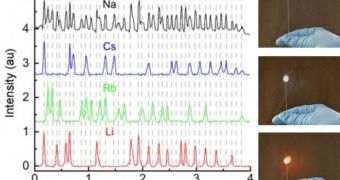Signaling flares have, in one form or the other, been used since the dawn of mankind, to alert a group of an incoming attack, or of a military victory, and also, more recently, for soldiers to signal they are in danger, or to pinpoint their location for a helicopter pick-up. But the flares, which in themselves are designed to be visible, also attract the attention of the enemy, which can pinpoint these locations as well. Now, thanks to modern-day chemistry, researchers may finally be able to create flares that are visible only to those who know what they are looking for.
Tufts University recently managed to create a special type of fuse, called the infofuse, which is able to send out a large variety of information as it burns. Created from lithium, rubidium and cesium placed on fast-burning nitrocellulose, the fuse is able to emit data both in the visible and the infrared light spectrum, which could come in very handy for soldiers seeking extraction in an enemy-packed area. Depending on the way the researchers combine the atoms, they can get the fuse as a whole to burn at different intensities and frequencies, making the device highly innovative.
“If somebody is stranded in an unfriendly environment, they may need to communicate without attention-drawing electromagnetic frequencies. The infofuses are designed to send signals that are visible in a region of the spectrum that human vision cannot detect, but can be picked up using detectors optimized for that part of the spectrum,” said Tufts University chemist David Walt, one of the scientists involved in the new research.
In other possible applications, “the signal would change as a function of something that binds to the fuse itself. Imagine you’d like to know what the concentration of some air contaminant is. The fuse would go off and send a signal modulated by the concentration of the contaminant,” Wired quotes the expert as saying. He added that the advanced biosensors of the future could also make use of the new technology, in order to boost their ability to send back information about the analyzed chemicals.
The new infofuse was created in a program funded by the US Defense Advanced Research Projects Agency (DARPA), and details of its manufacturing process are published in the latest edition of the scientific journal Proceedings of the National Academies of Science.

 14 DAY TRIAL //
14 DAY TRIAL //